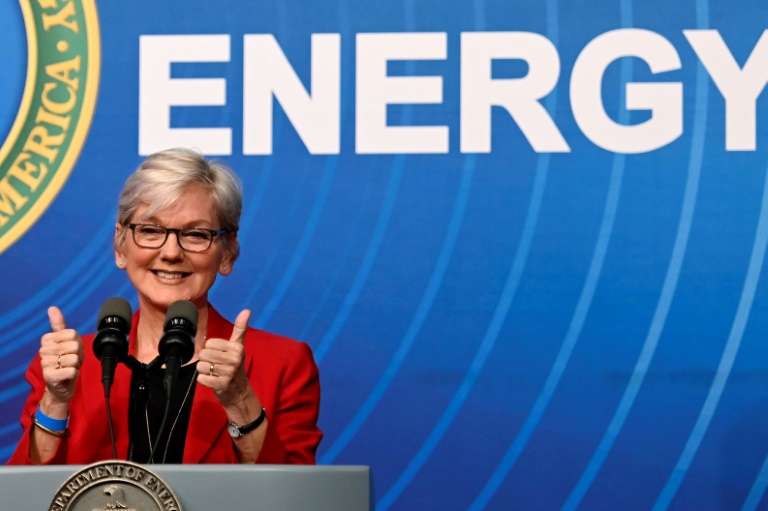US Energy Secretary Jennifer Granholm announces a major scientific breakthrough in nuclear fusion
US researchers announced a historic nuclear fusion breakthrough on Tuesday, hailing a “landmark achievement” in the quest for a source of unlimited, clean power and an end to reliance on fossil fuels.
The Lawrence Livermore National Laboratory (LLNL) in California said an experiment it conducted this month “produced more energy from fusion than the laser energy used to drive it.”
The US Department of Energy described the achievement of fusion ignition as a “major scientific breakthrough” that will lead to “advancements in national defense and the future of clean power.”
LLNL director Kim Budil described it as “is one of the most significant scientific challenges ever tackled by humanity.”
Scientists have been working for decades to develop nuclear fusion — touted by its supporters as a clean, abundant and safe source of energy that could eventually allow humanity to break its dependence on the fossil fuels driving a global climate crisis.
The LLNL said a team at its National Ignition Facility (NIF) conducted the first controlled fusion experiment in history on December 5, achieving what is known as “scientific energy breakeven.”
“This is a landmark achievement for the researchers and staff at the National Ignition Facility who have dedicated their careers to seeing fusion ignition become a reality, and this milestone will undoubtedly spark even more discovery,” US Secretary of Energy Jennifer Granholm said.
– More developments needed –
Nuclear power plants around the world currently use fission — the splitting of a heavy atom’s nucleus — to produce energy.
Fusion on the other hand combines two light hydrogen atoms to form one heavier helium atom, releasing a large amount of energy in the process.
That’s the process that occurs inside stars, including our sun.
On Earth, fusion reactions can be provoked by heating hydrogen to extreme temperatures inside specialized devices.
Researchers at the LLNL use the massive National Ignition Facility — 192 ultra-powerful lasers all pointed into a thimble-sized cylinder filled with hydrogen.
Like fission, fusion is carbon-free during operation, but has many more advantages: it poses no risk of nuclear disaster and produces much less radioactive waste.
However, there is still a long way to go before fusion is viable on an industrial scale.
“Many advanced science and technology developments are still needed to achieve simple, affordable IFE to power homes and businesses,” LLNL said.
Other nuclear fusion projects are also in development around the world, including the major international project known as ITER, which is currently under construction in France.
Instead of lasers, ITER will use a technique known as magnetic confinement, containing a swirling mass of fusing hydrogen plasma within a massive donut-shaped chamber.









